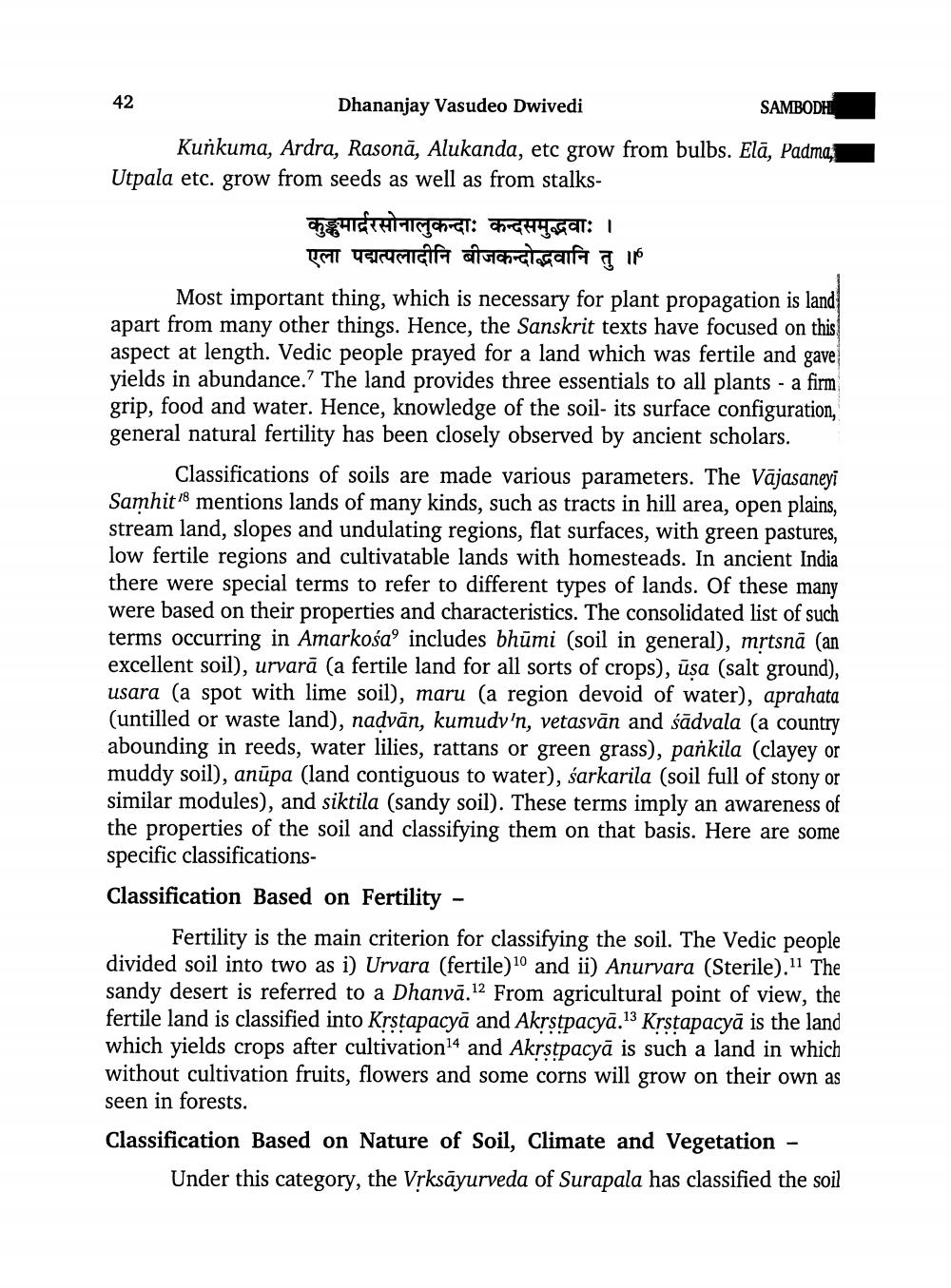________________
42
Dhananjay Vasudeo Dwivedi
SAMBODHI
Kunkuma, Ardra, Rasonā, Alukanda, etc grow from bulbs. Elā, Padma, Utpala etc. grow from seeds as well as from stalks
कुङ्कमाईरसोनालुकन्दाः कन्दसमुद्भवाः ।
एला पद्मत्पलादीनि बीजकन्दोद्भवानि तु ।' Most important thing, which is necessary for plant propagation is land apart from many other things. Hence, the Sanskrit texts have focused on this aspect at length. Vedic people prayed for a land which was fertile and gave yields in abundance. The land provides three essentials to all plants - a firm grip, food and water. Hence, knowledge of the soil- its surface configuration, general natural fertility has been closely observed by ancient scholars.
Classifications of soils are made various parameters. The Vajasaneyi Samhit 18 mentions lands of many kinds, such as tracts in hill area, open plains, stream land, slopes and undulating regions, flat surfaces, with green pastures, low fertile regions and cultivatable lands with homesteads. In ancient India there were special terms to refer to different types of lands. Of these many were based on their properties and characteristics. The consolidated list of such terms occurring in Amarkośa' includes bhūmi (soil in general), mrtsnā (an excellent soil), urvarā (a fertile land for all sorts of crops), ūşa (salt ground), usara (a spot with lime soil), maru (a region devoid of water), aprahata (untilled or waste land), nadvān, kumudyin, vetasvān and śādvala (a country abounding in reeds, water lilies, rattans or green grass), parkila (clayey or muddy soil), anupa (land contiguous to water), sarkarila (soil full of stony or similar modules), and siktila (sandy soil). These terms imply an awareness of the properties of the soil and classifying them on that basis. Here are some specific classificationsClassification Based on Fertility -
Fertility is the main criterion for classifying the soil. The Vedic people divided soil into two as i) Urvara (fertile) 10 and ii) Anurvara (Sterile)." The sandy desert is referred to a Dhanvā.12 From agricultural point of view, the fertile land is classified into Krstapacyā and Akrstpacyā.13 Krstapacyā is the land which yields crops after cultivation?4 and Akrstpacyā is such a land in which without cultivation fruits, flowers and some corns will grow on their own as seen in forests. Classification Based on Nature of Soil, Climate and Vegetation -
Under this category, the VỊksāyurveda of Surapala has classified the soil




